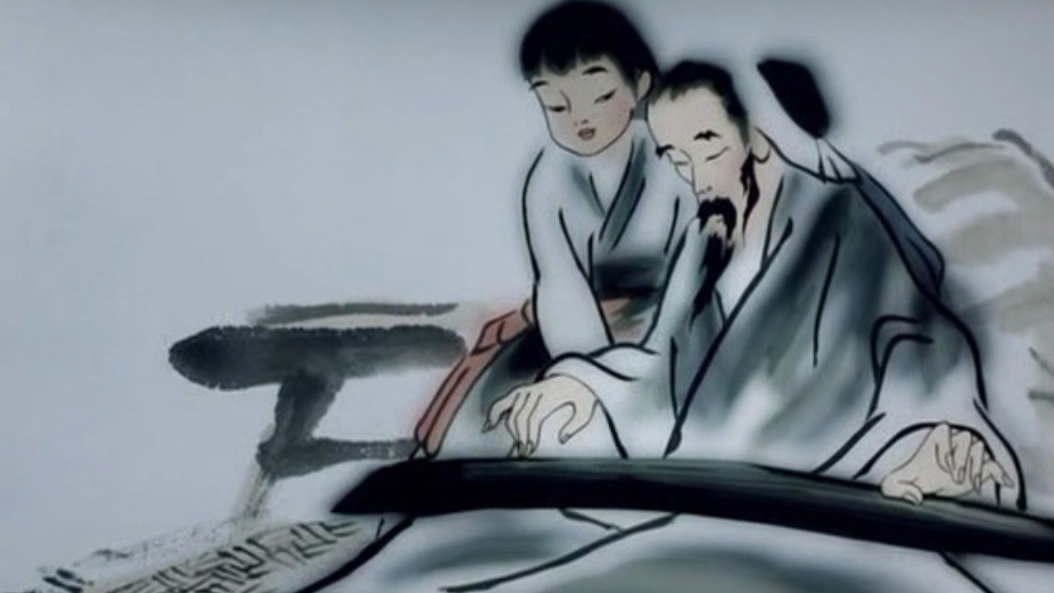
Culture
14:03, 10-Nov-2017
The plight and hope of Chinese animation
Song Jingyu

What comes to mind when you think of Chinese animation?
For many Chinese people who were born in the 1980s and 1990s, animation was an after-school staple. At that time, young Chinese children did not have many recreational choices, so watching animation on TV was the general form of entertainment.

CGTN Photo
CGTN Photo
Before foreign animations produced by Marvel and Toei Animation became popular among Chinese children, they primarily watched Chinese characters, such as the Monkey King, the Calabash Brothers or Mr. Black.
These beloved fantasy characters were created by one Chinese animation studio – Shanghai Animation Film Studio (SAFS).

SAFS Photo
SAFS Photo
The pioneer of Chinese animation
Founded in 1957 in Shanghai, SAFS is one of the oldest and biggest animation film studios in China. It has produced around 500 films, covering 80 percent of China's domestic animation production.
The studio is now celebrating its 60th anniversary and is attending an exhibition at the 9th China International Animation Copyright Fair in Dongguan, south China’s Guangdong Province, from November 9 to 11.

The exhibition of Calabash Brothers, or Huluwa, at the 9th China International Animation Copyright Fair in Dongguan, south China’s Guangdong Province. /timedg.com Photo
The exhibition of Calabash Brothers, or Huluwa, at the 9th China International Animation Copyright Fair in Dongguan, south China’s Guangdong Province. /timedg.com Photo
SAFS has enchanted generations of Chinese people. The classic, imaginative and creative animations guide audiences to a magical virtual world and inspire them to see the real world from a different perspective.
As a cornerstone of modern Chinese animation, SAFS produced works in various art forms with Chinese features. Its earlier masterpieces are rich in traditional Chinese culture, including ink-style animation "Baby Tadpoles Looking for Their Mother," paper cuts animation "Pigsy Eats Watermelon" and puppetoon animation "Avanti," winning prestigious awards at home and abroad.

Baby Tadpoles Looking for Their Mother. /Douban Photo
Baby Tadpoles Looking for Their Mother. /Douban Photo
The ‘irreproducible’ Chinese animation art forms
SAFS went through dozens of years of sluggish development because of an opening market. The country abandoned the centrally planned economy in 1978 and domestic audiences lost interest in self-made cartoons, which failed to compete with their Japanese and American counterparts.
The rapid pace of the commercialized animation industry made the diversified animation art forms die away. Zhu Yuchen, CEO of Beijing-based animation company Chongliyuhua, told CGTN Digital that "The production team did not need to worry about the high production costs and extremely long production cycle in the past. But now, SAFS and other Chinese animation companies have to think about the cost and the earning."

Feelings of Mountains and Waters. /Douban Photo
Feelings of Mountains and Waters. /Douban Photo
"Feelings of Mountains and Waters," publicly considered as a masterpiece at the artistic level, is the last ink-style animation released by SAFS in 1988, receiving many prizes and still earning 9.3 out of 10 on China’s influential review aggregator douban.com.
The animated style, however, was not abandoned by SAFS. The studio announced this year that they are making an ink-style animated film named "Ban Ling Fei Du," which tells the story of a group of Chinese gorals trying to survive. Shi Yi, the director of the film, told Shanghai Morning Post that it is a brand new attempt of making such a film for cinema.
"The most important thing is to tell the story in an attractive way. Before this, the (ink-style) animated films were not long enough…We are trying to improve the visual effects to make it more eye catching," Su Da, a director from SAFS, was quoted as saying.
Chinese animation industry: Then and now
In the past decade, a large number of private animation studios have emerged in China, with many being commissioned by established film studios in Hollywood or Japan. Meanwhile, China’s self-developed animation films and series have impressed a lot of audiences, constantly hitting the country’s box office. The 2015 animation film "Monkey King: Hero Is Back," 2016’s "Big Fish and Begonia," 2017’s "Da Hu Fa" (Grand Sentinel) are three highly praised works.

CGTN Photo
CGTN Photo
"We are standing in a fast-developing time with fierce competition and developers are trying to capture a piece of the animation market," Zhu noted. "In the past 10 to 15 years, animation developers had to spend their own money to create works, while currently developers can receive a steady stream of investment for producing," he added.
SAFS is looking to regain its past glory by
creating new works, reproductions and sequels. The official account of the studio on Weibo, the Chinese equivalent
of Twitter, announced on Wednesday that they are producing the sequel of "Music Up," the first Chinese animation idol TV series released in 2001. The
post caused a frenzy, receiving over 20,000 reposts with fans showing their
support.

Poster of the Music Up season 2. /SAFS Photo
Poster of the Music Up season 2. /SAFS Photo
From 2014 to 2017, the size of Chinese
animation audiences (people who had seen one animation or comic in the past six months) has doubled, increasing from 100 million to 230 million, according to a
report published by iResearch. Chinese people, especially the young, are
gradually accepting the growing subculture of animation, comics and games.
Although the country’s animation industry
still faces intense competition from foreign giant companies, 26-year-old Zhu
seems full of confidence, saying "The future is bright."

SITEMAP
Copyright © 2018 CGTN. Beijing ICP prepared NO.16065310-3
Copyright © 2018 CGTN. Beijing ICP prepared NO.16065310-3